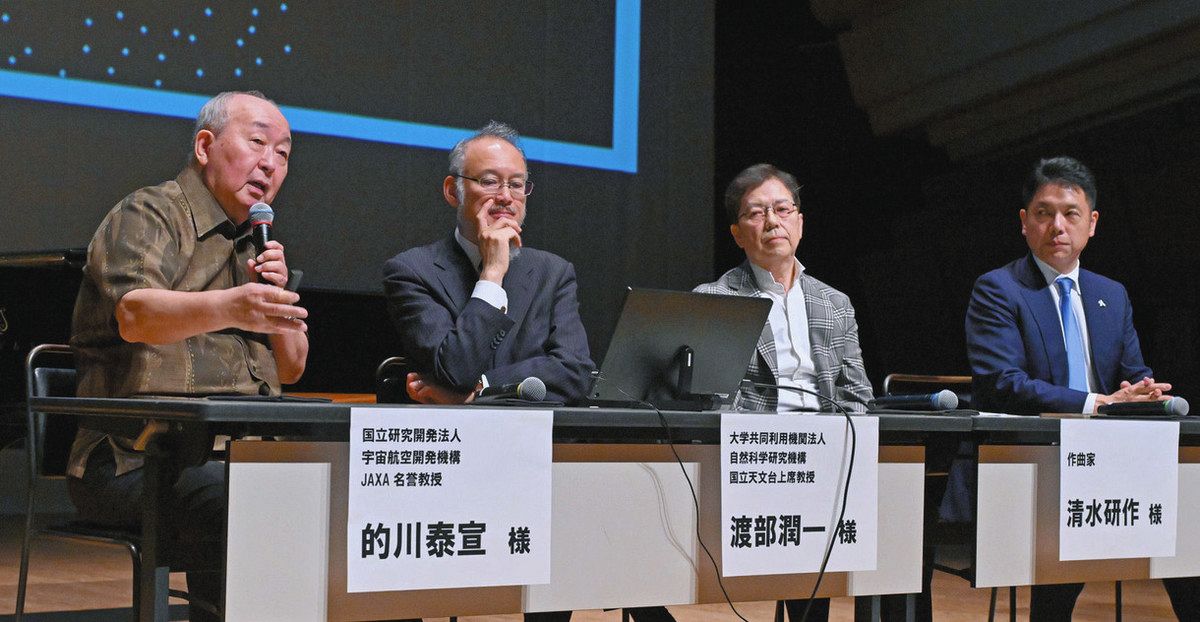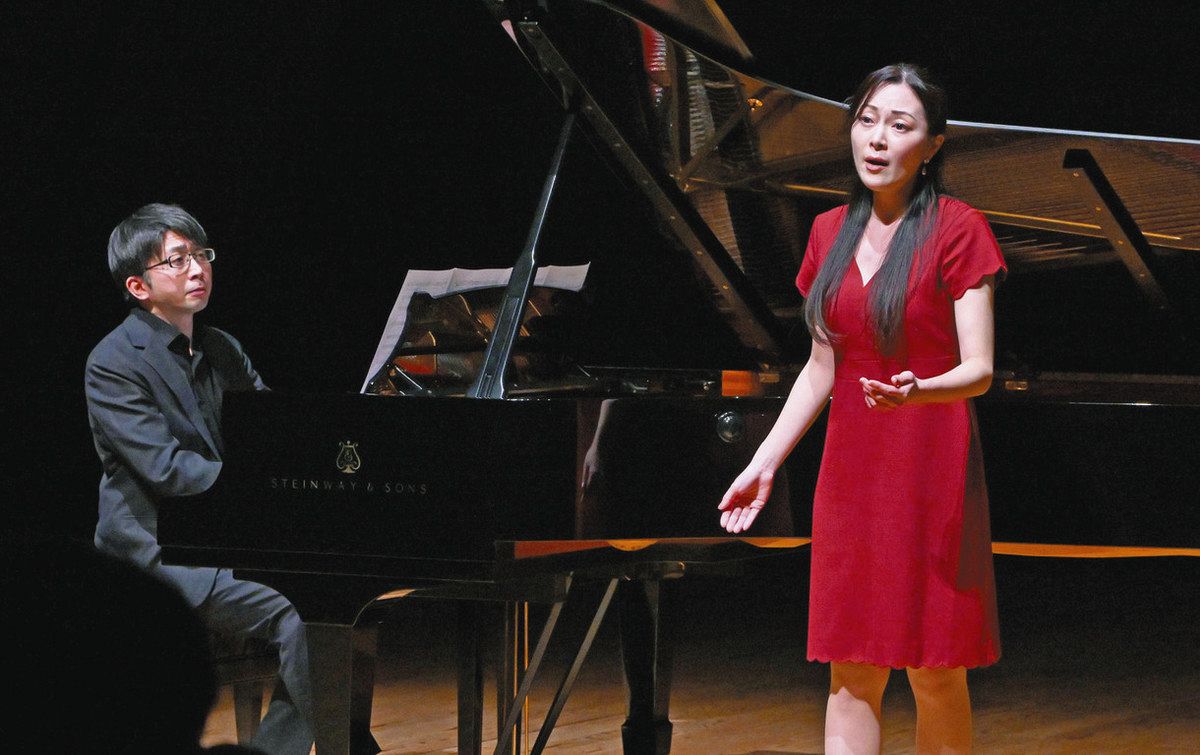Soprano singer Yuki Akimoto (right) performs the middle aria of her new song “Farewell to Earth.” Nohiro Motoyama plays the piano in the Sumida Pavilion.
A new movement has been added to Holst's repertoire “The Planets” (7 songs in total), which is known to include the famous piece “Jupiter”. The theme is “Voyager”, which left the solar system and went on a journey across the galaxy. To honor the achievements of the unmanned space probe, which was launched in 1977 and has only a few batteries remaining, the New Japan Philharmonic Orchestra will perform its world premiere at the Sumida Pavilion's Sumida Trifoni Hall on July 7.
…Goodbye solar system, goodbye Earth. We will never set foot on terra (earth) again. However, we are champions of the sun. Let's start a new journey with the memories of our city that is close to our hearts. goodbye everyone. My beloved city…
A demo of the new song was held in the same hall on the 15th of this month. The song's melancholy and beautiful melody, “Farewell to Earth,” is performed with English lyrics, echoing soprano Yuki Akimoto's clear singing voice.
◆The embodiment of space travel
In the song, Voyager travels through space and encounters alien life forms and scattered stars. A dramatic portrayal of an adventurer who leaves Earth and feels lonely, believing he will never return, but carrying with him the dreams and hopes of humanity.
The “Planetary” set consists of seven songs: Mars, Venus, Mercury, Jupiter, Saturn, Uranus, and Neptune, and additional songs were created with asteroid and Pluto themes. This time, it was planned by music producer Yu Ozawa (65), who wanted to write a song before Voyager's batteries ran out. In preparation for this year, the 150th anniversary of Holst's birth, last spring we asked Kensaku Shimizu, a composer who graduated from Harvard, where Holst was a lecturer, and a professor at Niigata University, to compose a piece.
“We created a sound world that depicted Voyager's journey over many years. We created a video-like flow and expressed loneliness and sadness,” Shimizu says. There will be a large lineup of over 100, including nine horns and four rare Wagner tubas. A women's choir from Toho Gakuen University and a pipe organ will also be included, and Shizuo Z. Kuwahara, who specializes in conducting large orchestras, will be in charge of the premiere.
Voyager actually carries a gold-covered copper record called a “golden record” in case it encounters intelligent extraterrestrial life. Sound sources such as Beethoven's “Fate” are also engraved, and these motifs are intertwined in the new song.

Talking about the history of the Voyager space probe in a new song performance (from left) Emeritus Professor Yasunori Matokawa of the Japan Aerospace Exploration Agency, Senior Professor Junichi Watanabe of the National Astronomical Observatory of Japan, composer and professor Kensaku Shimizu of Niigata University, and CEO Mitsunobu Okada of Astroscale Holding hands in Sumida Pavilion
Space experts also took the stage to showcase the new song. Yasunori Matokawa, professor emeritus at the Japan Aerospace Exploration Agency (JAXA), and Junichi Watanabe, senior professor at the National Astronomical Observatory of Japan, explained the solar system and the Voyager launch. “I'm looking forward to seeing how music will express the world 20 billion kilometers away,” said Mitsunobu Okada, CEO of Astroscale Holdings, which has a factory in Sumida Ward and works on space debris removal. He said with high expectations.
All seats for the show are reserved, S seats are 6,000 yen, and A seats are 5,000 yen. To apply, please visit the Sumida Triphony Hall homepage or call the Ticket Center on 03 (5608) 1212.
<المسافر>Unmanned space probes of extrasolar and extrasolar planets by the National Aeronautics and Space Administration (NASA). 1 was launched on September 5, 1977, and observed Jupiter, Saturn and their moons. The second mission was launched on August 20 of the same year, and observed Uranus and Neptune in addition to the planets visited by the first mission. Discover the new moons of each planet and the rings of Jupiter, Uranus and Neptune. It is currently in space, more than 20 billion kilometers from Earth.
Text by Rina Suzuki / Photography by Naoko Yuki
◆If you have any opinions or requests regarding the paper, please send an email to “[email protected]”.

“Travel maven. Beer expert. Subtly charming alcohol fan. Internet junkie. Avid bacon scholar.”







More Stories
The ranking of the best survival horror games selected by the IGN US editorial team has been released! Resident Evil RE:2 ranked first
Enjoy a hot cigarette while looking at whales and tropical fish under the sea ⁉︎ “Ploom Dive” is an amazing spatial video experience using Apple Vision Pro
Apple Watch now supports sleep apnea, watchOS 11 released – Impress Watch